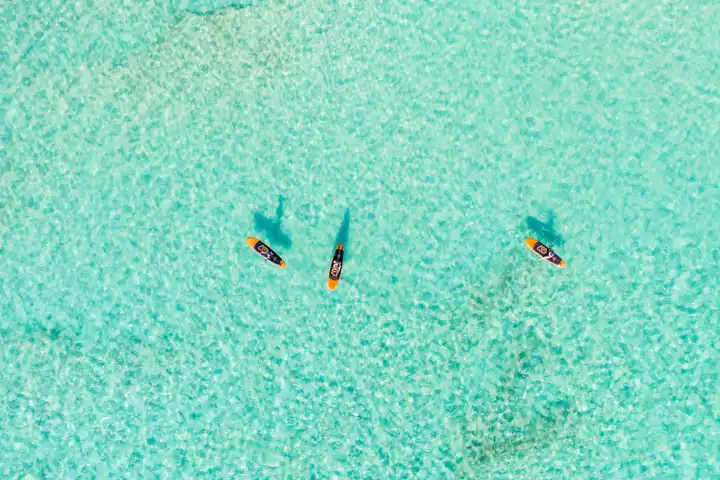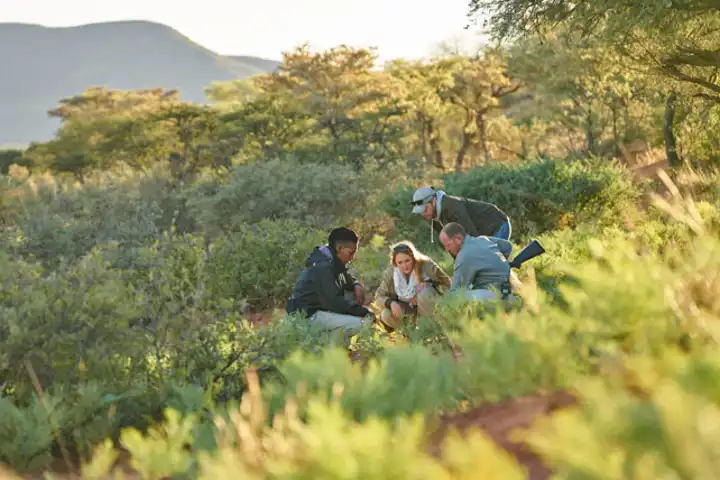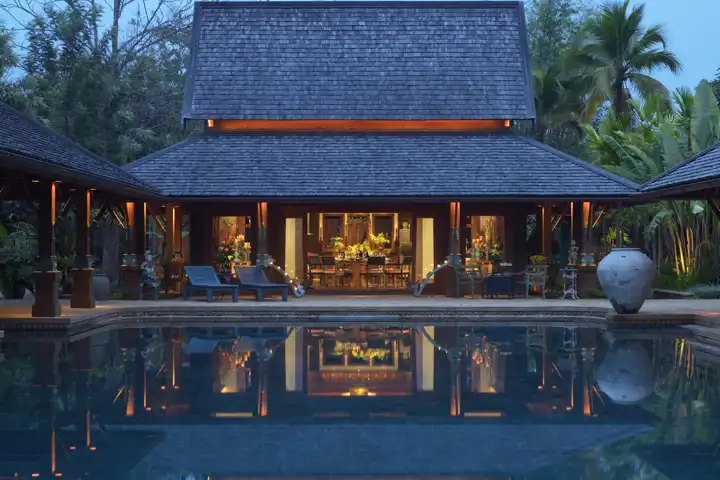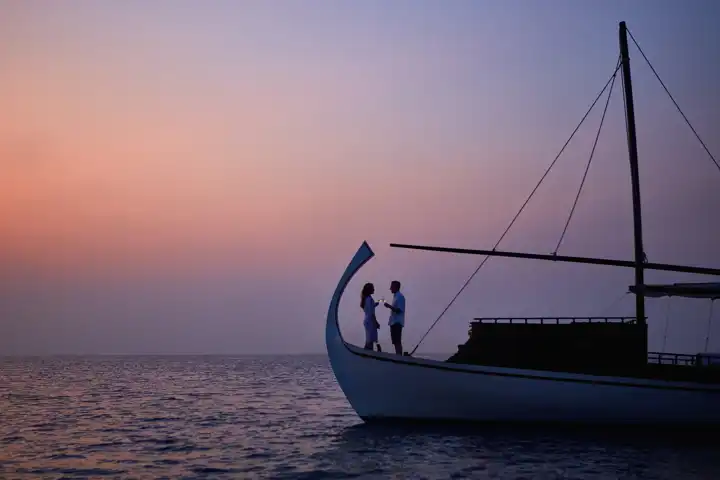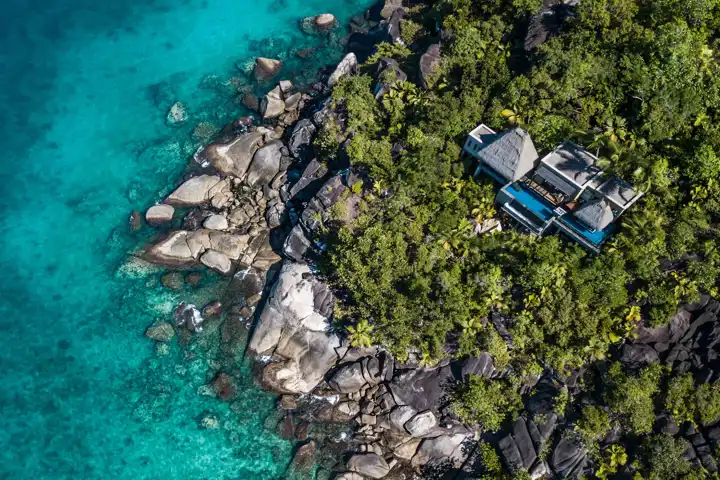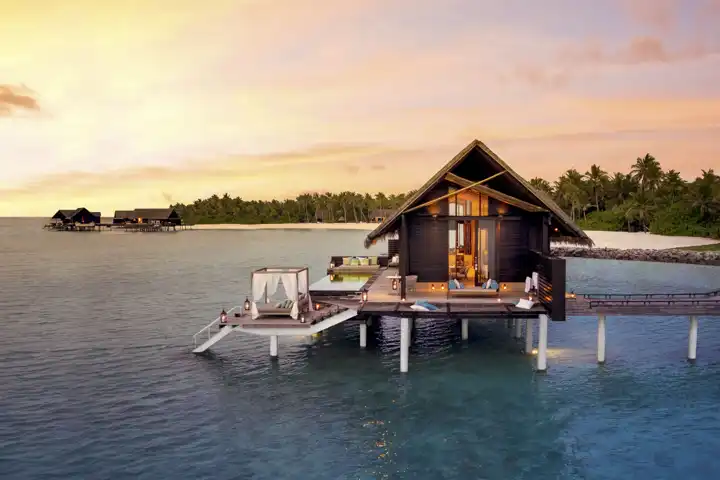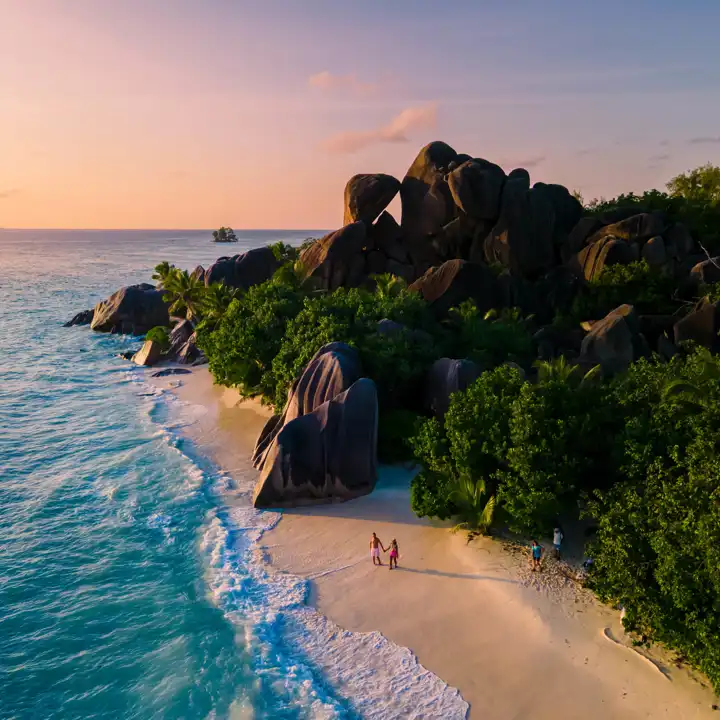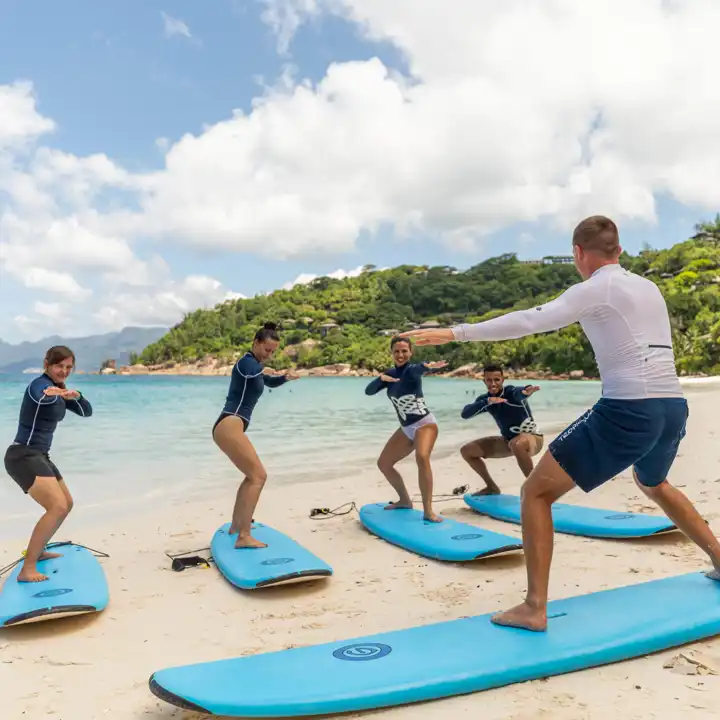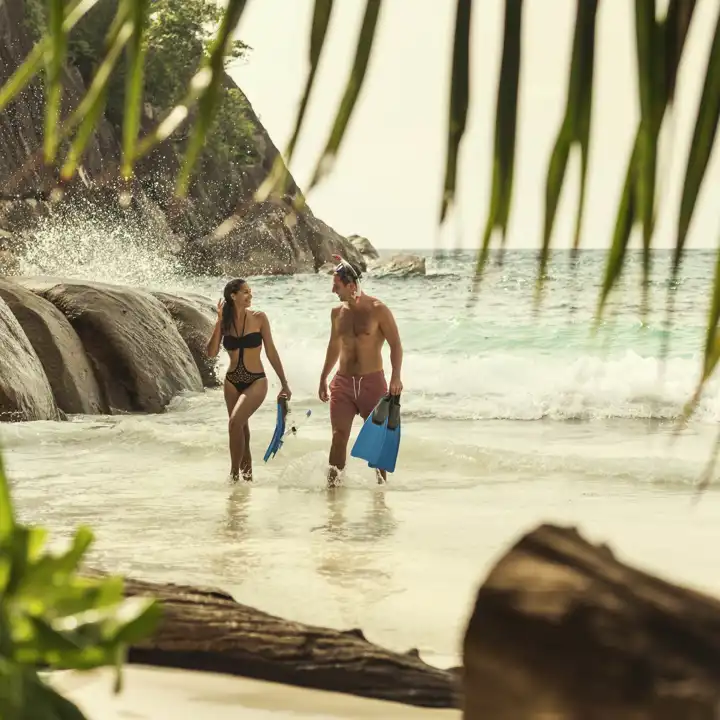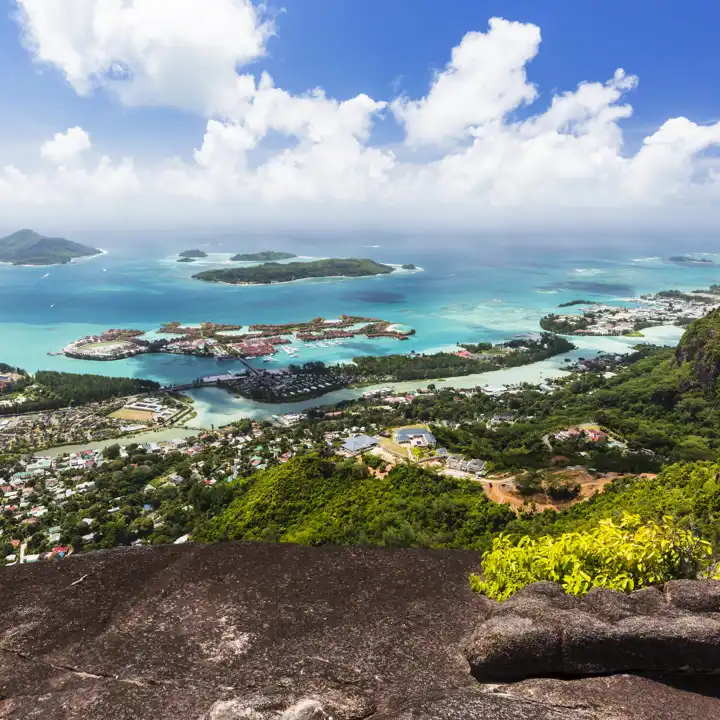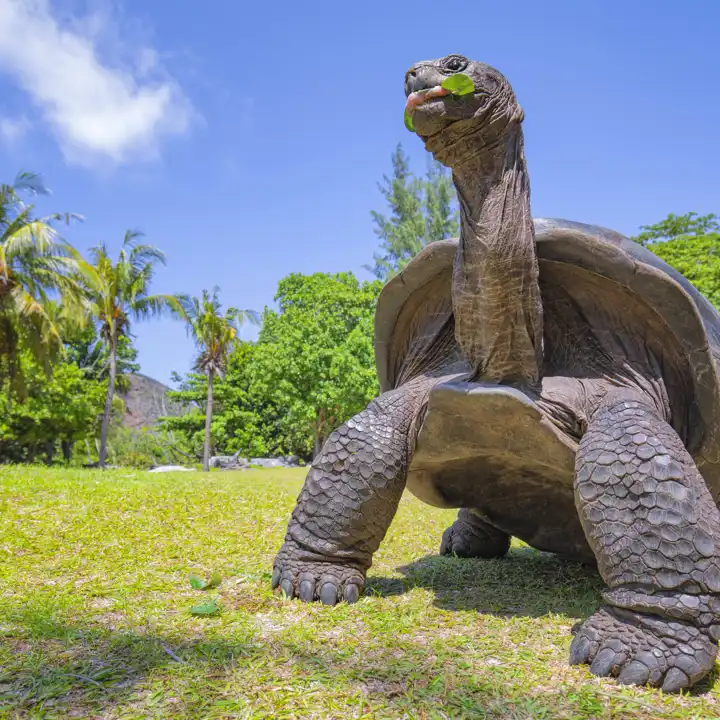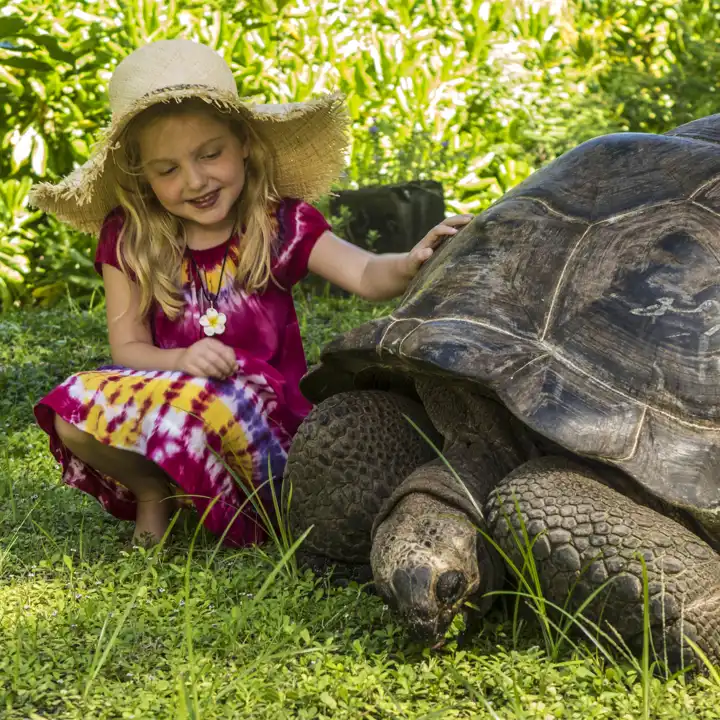Seychelles
An Unspoiled and Untamed Natural Wonder
Seychelles
Seychelles may be the only country described exclusively in hyperbole. “Paradise”, “Garden of Eden” and “spectacular” seem to be among the most common terms employed, and typically the focus of these descriptions centers on the physical beauty of the islands: the multiple blue hues reflecting out of the water, the distinctive granite rock formations, and the white, clean beaches. But there is much more to Seychelles than first meets the eye. It is a natural wonder, unspoiled and still untamed, yet delightfully charming. Luxury Seychelles travel gives you the perfect retreat – an add-on option after a dusty safari or a simple romantic escape in paradise for two. There are few better ways to experience Seychelles Islands vacation packages than with a custom journey from Ker & Downey.
Clustered in an area of roughly 30 miles, the Inner Islands of Seychelles are a group of granitic islands located in the northeast section of the sprawling archipelago. The largest of these is Mahe, home to the country’s capital city, Victoria, and 90 percent of the diverse Seychellois population. Despite its concentration of citizens and the urban air of Victoria, tropical vegetation is abundant and over 75 white sand beaches are scattered along the island’s shores. The northeastern portion of the island is characterized by towering mountains with Morne Seychellois the tallest of the peaks.
Praslin is the second largest of the Inner Islands, home to the endemic Coco-de-Mer palm tree and a lush 45-acre valley known as the “Garden of Eden”. The islands of Ste Anne, Cerf, Moyenne, and Round all comprise the Ste Anne Marine National Park, the first marine national park established in the Indian Ocean. With a wealth of beautiful coral reefs below the turquoise waters, the park is an ideal destination for snorkeling, diving, and glass-bottom boat excursions.
The Outer Islands of Seychelles are so far flung it’s hard to believe they exist at all. Almost half of Seychelles’ land area is found on these mostly uninhabited planes. Comprised mostly of atolls, or circular-shaped land masses surrounding a lagoon, the islands are all low-lying and young by geological standards, and shelter a plethora of coral formations and choice dive sites offshore.
Several species of marine birdlife including tern, noddy, herons and wading birds flourish on the secluded land masses and in the lagoons. Hawksbill and green sea turtles can be found regularly nesting in the ample sands of Platte, Desroches, and Astove islands. Endemic to the island of the same name, the Aldabra tortoise, like its sea-dwelling relative, is the focus of constant conservation and rehabilitation efforts in Seychelles.
Attracting those seeking water activities like scuba, snorkeling, and fishing—and those who seek solitude with nothing better to do than curl up in a beachside hammock and take another nap—a journey to Seychelles is utterly delightful. Discover our Seychelles vacation packages above.

